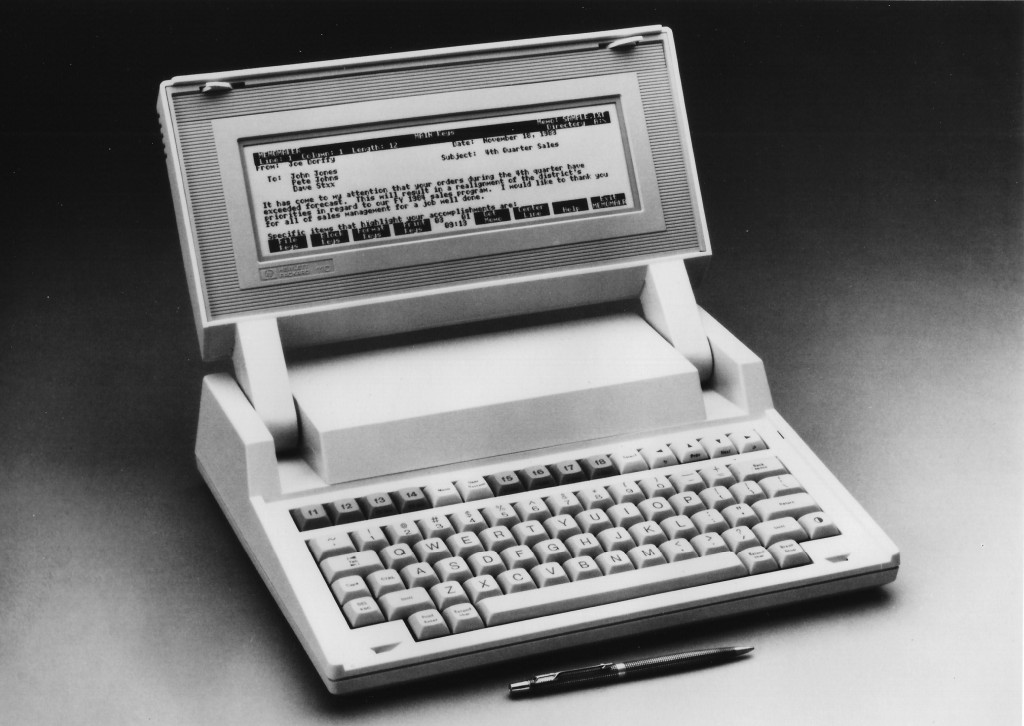
Source: HP, 1984
Hewlett-Packard did not have broad success with portables until it introduced the HP 110 laptop. Some HP literature referred to the 110 as simply “The Portable”. It offered good performance in a small but practical package. At nine pounds, it was one of the more petite laptops of the time.

Source: HP, 1984
The HP 110 had a software suite in ROM that included a graphical user interface, word processor, and the Lotus 1-2-3 spreadsheet program. It also had a terminal emulation program, through which users could share files with other computers. HP claimed that this enabled “a new kind of computing in which programs and data are always present, wherever The Portable is carried.”

Source: HP, 1984
A portable, battery-powered Thinkjet printer and HP 9114A 3.5-inch floppy disk drive were available as options. The HP 9114A was notable as HP claimed it was the first that could read and write from both sides of the disk, effectively doubling capacity.

Source: HP, 1986
In 1985, a Plus version of the 110 was introduced with greater RAM and ROM capacity and improved graphics resolution.
Introduced: May 1984
Original Retail Price: $2,995
Base Configuration: 5.44MHz 80C86, MS-DOS 2.01, 272K RAM, 384K ROM, monochrome LCD, integral keyboard, RS-232C and HP-IL ports, Lotus 1-2-3 and MemoMaker in ROM, carrying case, internal modem, owner’s and software manuals, AC adapter, lead-acid batteries, battery charger
Video: 16-line x 80-column text, 480 x 128 graphics
Size/Weight: 13 x 10 x 3 inches, 9 lbs.
Important Options: HP 911A 3.5-inch external floppy disk drive, HP 2225B printer, leather carrying case
